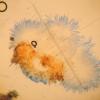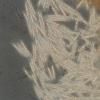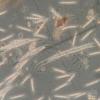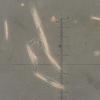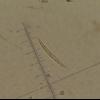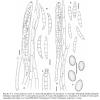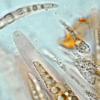
20-12-2025 23:08
Patrice TANCHAUDBonsoir, récolte sur sol sablonneux dans l'arri�

21-12-2025 09:32
Hello.A tiny ascomycete found embedded in wood in

20-12-2025 15:47
Mirek GrycHi.These grew on pine wood that was heavily covere

18-12-2025 21:17
Pol DebaenstThe identification took me to Byssonectria deformi

15-12-2025 07:09
 Danny Newman
Danny Newman
indet. Rutstroemiaceae sp. on unk. fallen leavesMc

19-12-2025 10:10
Patrice TANCHAUDBonjour, récolte réalisée en milieu dunaire, a

18-12-2025 17:23
 Bruno Coué
Bruno Coué
Bonjour,je serais heureux d'avoir votre avis sur c
The spores look like those of Tubeufia cerea but it could be compared with characteristic specimens of this species growing on the same branch. In other features quite different: size of ascomata, asci length, apical ring (lacking in Tubeufia?) and spore septation.
No satisfactory outcome with the Tubeufia key of Rossman (1987). And Tubeufia is bitunicate. Tubeufia or other genera to consider? Does somebody know Conioscyphascus (Reblova 2004)?
Hi,
See in Diaporthales. Some genus are possible (Pleuroceras, Linospora, ...)
Could yopu show us an ascomata ?
Alain
Alain, thanks for your suggestion to make a photo, it forced me to look further.
I have found more ascomata under the bark, some partly immersed in the rotten wood.
They were coloured olive greenish.
More important this time I found several with a papilla (about half the size of the ascoma).
Furthermore the ascomata are soft and start to collapse after 10-15 minutes.
Here is a photo of an ascoma, bad quality but it gives an idea how it looks.
Eduard

Cheers,
Jacques

the species is IKI-, I have tested it. It only turns red in Congo.
regards,
björn

Yes, I remarked !
And about strange ascos, I just found Pleospora herbarum on lichen !!! (on Peltigera rufescens), absolutely incredible but it is true.
Alain

I am of course happy that this collection has got a name.
Björn did a very good job, very frustrating to find something with clear features without being able to identify it.
I had considered the genus Conioscyphascus but was much in doubt because the spores look much broader in the drawings of Reblova & Seifert. Also I did not note the rather long neck (see fig. 27).
Jacques, the ascus top was not amyloid as photo 5 suggests.
I will check the original and I will come back on this tomorrow.
EDuard

